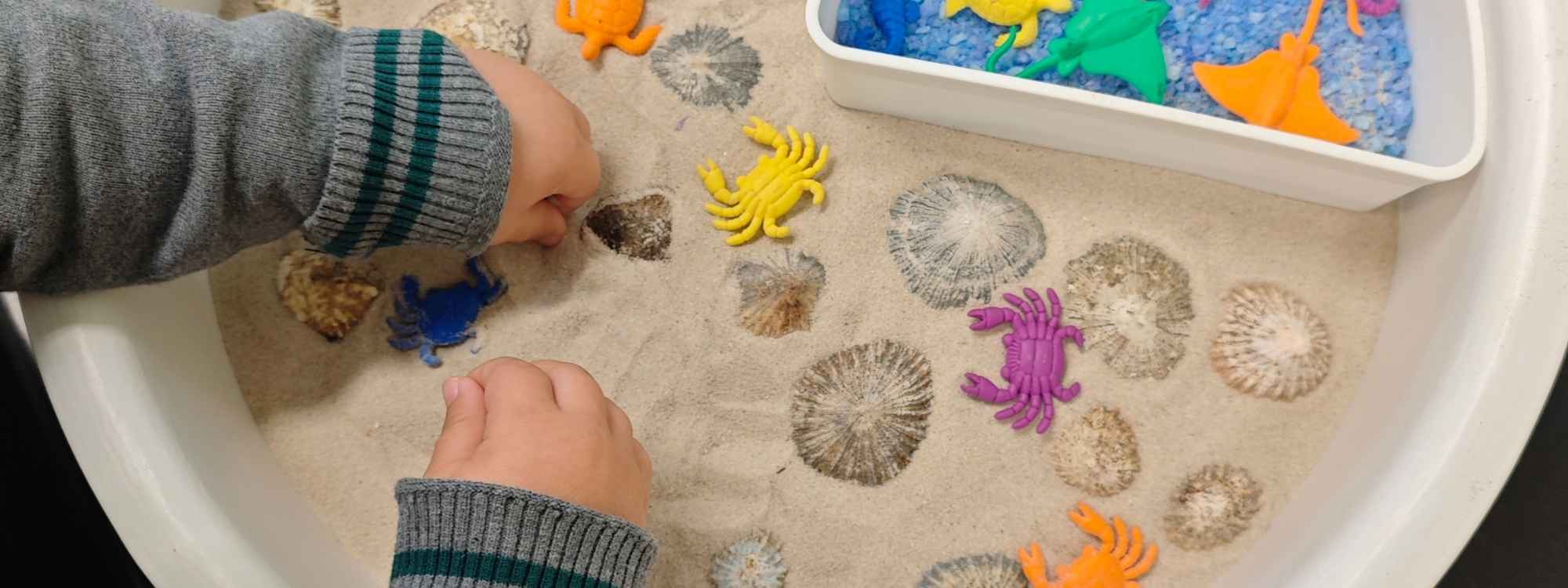Signs of Severe Autism in 2-Year-Old: Key signs to watch for
Recognizing the signs of autism, particularly the signs of severe autism in a 2-year-old, can be life-changing. At this stage of early childhood, children typically reach important developmental milestones related to speech, social interaction, and play. However, in some children, the absence or regression of these milestones may signal a deeper neurodevelopmental concern: autism spectrum disorder (ASD).
Severe autism, often categorized as Level 3 ASD, involves significant impairments in verbal and nonverbal communication, limited social interaction, and repetitive or restrictive behaviors. Identifying these early signs allows families to seek timely support, opening the door to appropriate interventions that can improve communication, life skills, and social development.
Introduction to Autism
Autism Spectrum Disorder (ASD) is a complex neurodevelopmental condition that affects a child’s ability to communicate, interact socially, and adapt to their environment. Symptoms of autism spectrum disorder vary widely, but children with severe autism often require very substantial support across multiple areas of development.
Severe autism symptoms in toddlers can appear as a lack of eye contact, delayed speech, repetitive movements, and extreme difficulty in forming relationships. Some children may also exhibit co-occurring challenges such as sensory sensitivities, sleep issues, or intellectual disability. Understanding the significant challenges and characteristics of severe autism helps parents seek the right evaluation and early intervention services.
According to the CDC, early detection and intervention can significantly improve long-term outcomes. Recognizing the signs in a 2-year-old is especially important, as this period of rapid brain development offers a crucial window for support and progress.
Child Development and Autism
During typical development, 2-year-olds begin to form two-word phrases, imitate others, and show interest in social play. These milestones reflect the growth of social communication skills and cognitive development. However, in children with severe autism, language therapy may be necessary as this natural progression may be disrupted or absent.
Children diagnosed with autism may not respond to their name, point at objects, or show interest in other children. They may focus intensely on a single toy, repeat the same behavior for long periods, or struggle to transition between activities. While many children develop at their own pace, missing multiple key milestones may indicate a developmental delay associated with ASD, requiring strategies to manage co-occurring symptoms.
Early childhood is a vital stage for monitoring growth through regular well-child visits. Pediatricians use developmental and behavioral screenings to track a child’s communication skills, eye contact, play behavior, and motor development. When red flags are identified, families are often referred for further evaluation and diagnosis.
Early Signs and Intervention
Early signs of severe autism in a 2-year-old often include significant communication difficulties, challenges in social interaction, and the presence of restrictive or repetitive behaviors. Unlike children with moderate autism, who may develop some language or social skills, those with severe autism typically show very limited communication or even speech regression.
Key signs may include:
- Lack of spoken words or phrases
- Failure to respond to the name
- Absence of pointing, waving, or other gestures
- Repetitive movements like hand-flapping or spinning
- Avoidance of eye contact or facial expressions
- Disinterest in interacting with family members or other children
Early intervention is crucial for children with severe autism. Services such as speech therapy, occupational therapy, and Applied Behavior Analysis (ABA) can help improve language skills, daily routines, and behavior management. These supports, aimed at improving communication skills, are often provided through state early intervention programs or individualized education programs (IEPs) once the child enters preschool.
Behavioral Challenges
Children with severe autism often face significant behavioral challenges that can interfere with daily life. These may include self-injurious behaviors like head-banging, biting, or intense meltdowns triggered by sensory overstimulation. These behaviors are often rooted in difficulty communicating needs or processing the environment.
Behavioral rigidity is another hallmark. A child might insist on strict routines, resist changes in daily life, or engage in repetitive play patterns. These behaviors are not just quirks; they reflect a need for predictability and regulation in an often overwhelming world.
Managing these behaviors requires consistency, patience, and therapeutic interventions. Behavior management strategies from ABA therapy, combined with family coaching, can help children learn safer, more adaptive ways to communicate and navigate their environment.
Applied Behavior Analysis
Applied Behavior Analysis (ABA) is one of the most widely researched and effective therapies for children with severe autism. It focuses on understanding behavior patterns and using positive reinforcement to teach critical skills.
In ABA therapy, children work with a trained therapist who customizes activities based on individual goals such as improving communication, reducing harmful behaviors, or increasing independence with daily tasks. Each session is structured around measurable progress, and parents are often involved to reinforce these skills at home.
For severe autism, ABA can play a crucial role in helping children build a foundation for future learning. Over time, this structured approach can enhance communication skills, encourage reciprocal social interaction, and reduce distressing behaviors that interfere with development.
Assistive Technology and Daily Life
Assistive technology can make a remarkable difference in the daily life of a child with severe autism. Many children who are nonverbal benefit from tools such as speech-generating devices, picture exchange systems, or communication apps that help them express needs and engage socially.
Severe autism may also affect fine motor skills and sensory processing. Children might struggle with dressing, feeding, or tolerating common textures and sounds. With the right support, including occupational therapy and assistive tools, many children can develop increased independence.
Parents and caregivers play a central role in incorporating these tools into daily routines. Creating a consistent environment with visual schedules and sensory-friendly spaces can reduce stress and improve participation in daily activities.
Severe Autism and Associated Conditions
Severe autism is often accompanied by other developmental or medical conditions that complicate diagnosis and care. Many children experience intellectual disability, sleep disturbances, epilepsy, or extreme sensory sensitivities that require ongoing monitoring and support.
Communication can be extremely limited, with some children relying entirely on nonverbal communication methods or assistive devices. Social communication challenges make it difficult to form peer relationships or engage in shared play.
Understanding these associated conditions is essential for developing appropriate interventions. A child with both severe autism and a sleep disorder, for example, may need a coordinated care plan involving a pediatrician, neurologist, and behavioral therapist. Multidisciplinary approaches ensure that all aspects of children with autism’s health and development are addressed.
Parental Support and Resources
Caring for a child with severe autism can be both rewarding and demanding. Parents often face emotional challenges, including stress, burnout, and concern about the future. Access to reliable resources and supportive communities can make a meaningful difference.
Support systems include:
- Parent support groups and online communities
- Family counseling and autism-focused therapy
- Educational advocates for navigating special education
- Access to respite care and in-home support services
Many families also benefit from connecting with experienced providers who can guide them through the evaluation, therapy, and individualized education planning process. Empowered, informed parents are key to creating positive, consistent environments where children with autism can thrive.
Socialization and Relationships
Building relationships is a core challenge for children with severe autism, but with support, meaningful social connections are possible. These children may struggle with interpreting social cues, particularly with initiating social interactions or responding to others’ emotions.
Structured social skills training can teach children how to make eye contact, engage in turn-taking, or interpret facial expressions. These programs are often integrated into ABA therapy or provided as stand-alone services in early education settings.
With the help of trained professionals and supportive peers, children can develop foundational skills that help them participate in group play, classroom activities, and eventually form friendships. Social interaction is a learned skill for many children with autism, and practice in safe, guided environments builds lasting progress.
Conclusion
Recognizing the signs of severe autism in a 2-year-old is an important first step in providing the support a child needs to thrive. While challenges in communication, behavior, and daily life may be significant, early evaluation and a well-rounded approach, including behavior therapy, assistive tools, and family support, can make a lasting impact. With consistent care, structured intervention, and a nurturing environment, many children with severe autism can build essential skills and achieve meaningful progress.
Concerned About Severe Autism Signs in Your Toddler? At Champions ABA, we specialize in early intervention for children showing signs of severe autism. Our personalized, evidence-based therapy programs are designed to support your child’s communication, behavior, and daily living skills. Whether you’re looking for an autism diagnosis or ready to begin therapy, our experienced team is here to guide your family every step of the way. Call (877) 242-1744 or visit our website to learn how we can help your child thrive.
FAQs
What are the early signs of severe autism in a 2-year-old?
Signs include no spoken words, avoiding eye contact, repetitive movements, not responding to their name, and limited social interest. These symptoms may appear before age 2 and typically require significant support.
What are red flags for autism in toddlers?
Red flags include not pointing, waving, or using two-word phrases by age 2, avoiding eye contact, and showing repetitive behaviors. If these signs are present, a developmental screening is recommended.
How do you discipline a 2-year-old with autism?
Use structured, gentle guidance instead of punishment. Visual supports, clear routines, and positive reinforcement help teach new behaviors and reduce meltdowns.
What behavioral problems are common in autism?
Repetitive actions, self-injury, sensory meltdowns, or aggression may appear. These behaviors are often triggered by communication struggles or environmental stress.
How is autism diagnosed in a toddler?
Autism is diagnosed through behavioral evaluations by a pediatrician, psychologist, or developmental specialist using tools like the ADOS. Early diagnosis is key to starting therapy as soon as possible.



